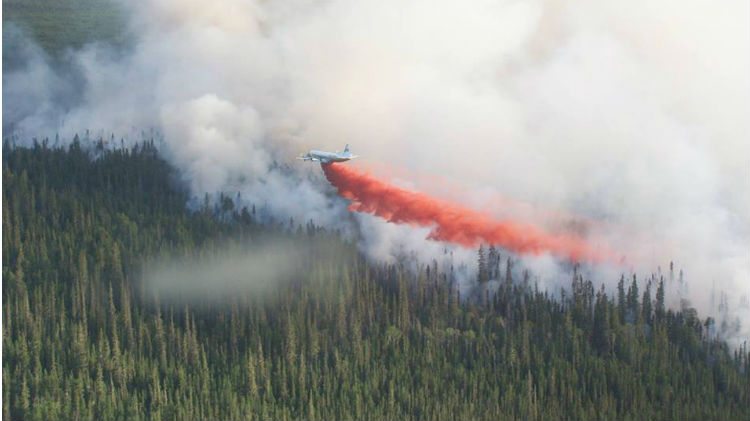Another busy wildfire season could be in store for NWT residents according to the Canadian Forest Service.
Fire research scientist Kerry Anderson says much of western and northern Canada experienced a relatively dry winter, and those conditions are expected to carry through into spring.
Anderson says that could also result in an early start to the forest fire season.
“We’re currently experiencing an El Nino event,” he said. “Essentially this is an ocean condition that occurs at the equator which brings warm water over the coast of Peru.
“This warm water creates a bubble of warm air which creates warmer, drier conditions even as far north as the Northwest Territories.
“Because of this warm winter, the snow is melting faster than anticipated and because of lower snow amounts, the forest will come out quite a lot drier than normally experienced this time of year.”
Anderson says a rash of wildfires have already broken out south of the border in parts of Alberta and British Columbia.
2014 was the Northwest Territories’ worst forest fire season on record, when 385 fires burnt roughly 3.5 million hectares of land.
Despite a fast start to 2015, a total of 245 wildfires were recorded on the season, burning 646,954 hectares.
Following what could be an aggressive start to the 2016 wildfire season, Anderson expects things to settle down with the collapse of El Nino.
“We’re actually anticipating this warm, early spring to drop to more milder conditions probably towards the end of June and beginning of July,” he said.
“While this fire season might start off really strong and rapidly, we expect it to kind of settle down later in the summer.”
Fires a way for forests to ‘brush their teeth’
Public safety is a top priority when wildfires break out, but Anderson says fires are also a natural event in this part of the country.
He says forested landscapes need fires to help ‘perpetuate themselves and to maintain health.’
The challenge is to balance public safety and forest health.
“I like to draw the analogy that fires in the forest are the forest’s way of brushing its teeth. It helps get rid of excess rubble and debris and helps to bring back a healthy forest.”




